You set out your pets’ food bowls. As your dog chomps down on their meal, a kibble skitters across the floor to where your cat’s eating. As you watch, that feline curiosity kicks in. Your cat bends down and samples the doggie kibble. Maybe they return to their bowl, or perhaps they walk over to the dog’s bowl, interested in sneaking some more. (Or they could spit the kibble out – cats come in every type) In any mixed household, the potential exists for this scenario. And when you see your pets investigating each other’s food bowls, it probably makes you wonder: Can cats eat dog food? It seems possible, given the similar ingredient labels. And while an experimental bite or two won’t do any damage, it’s not a habit you want to encourage. We’ll delve into why it’s important to keep dogs eating dog food and cats eating cat food.
Cat Taste
Whether you’re a human, dog, or cat, you enjoy your food courtesy of your taste buds. They’re the sense organs on the tongue that pick up different taste experiences: sweet, salty, sour, and bitter (and, if you’re a foodie, they’ve thrown umami into the mix). But different species have different counts of taste buds:
- Cats: 470
- Dogs: 1,700
- Humans: >9,000
Crazy, right? Of the three, cats don’t get to enjoy as much taste out of their foods. And they don’t sense sweet tastes AT ALL. This is one of the reasons they’re so picky about their foods. And it’s why cat food manufacturers work so hard to pack in protein and fat to entice felines. The higher levels go to work on those few measly taste buds. So when cats eat dog food, it’s shocking. Because dog food? It’s BLAND! (No offense to canines)
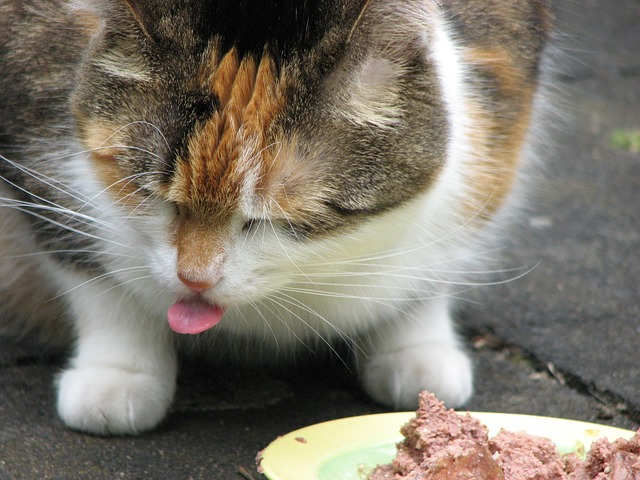
When Cats Eat Dog Food
Still, you find plenty of cats that eat dog food. Maybe not all the time, but as an experiment. When we refill our dog food container, a kibble or two usually hits the floor. And at least one of the cats tends to pounce on them. As our Greyhound’s food is salmon-flavored, it makes sense. The cats prefer seafood flavors, and they can smell it. The kibble’s larger than their usual dry food, but they seem to manage okay. And since it only happens once every few months, it seems harmless enough.
If that’s similar to the pattern YOU see, you’re probably in the clear.
But when cats eat dog food regularly, that’s when problems crop up. Even if the protein source (such as salmon) is the same between the two species. Because while ingredient labels often sound similar, they’re NOT the same. And the long-term effects of cats eating dog food can have serious health complications. We love our cats and dogs equally. But their food? They’re vastly different.
Feline Diets
Cats are obligate carnivores. This means they MUST eat meat to survive. All of the nutrients they need to function properly come from animal proteins. Dogs, on the other hand, are omnivores. They still enjoy meat, but they also have no problem eating vegetables, fruits, and grains (similar to humans). And that’s reflected in their diets.
When you look at the average feline diet, the Cornell Feline Health Center recommends the following breakdown:
- Protein: 35-45%
- Fat: 15-20%
- Fatty acids
- Vitamins
- Minerals
- Water
In comparison, dogs only need around 18-26% protein from their diets. And fat? They shouldn’t get more than 15%. So when cats eat dog food, they’re coming up short on the top two categories. That leads to malnutrition over time. And since higher protein and fat equal higher calories, felines also lose out on energy levels. It’s a slippery slope. You don’t want to make that swap.
Complications When Cats Eat Dog Food
In addition to the lower protein, fat, and calories, when cats eat dog food, they miss key ingredients. Including some amino acids and vitamins that you may not recognize as vital when you skim those labels. And without them, cats face severe problems that can land them in the hospital – especially if they chow down on canine kibble all the time.
How serious is the problem? Well, the Pet Food Manufacturer’s Association (PFMA) requires 41 essential nutrients for all cat foods. These are vitamins and minerals that cats MUST have in their diet to remain healthy. Dogs? They only have 37 essential nutrients.
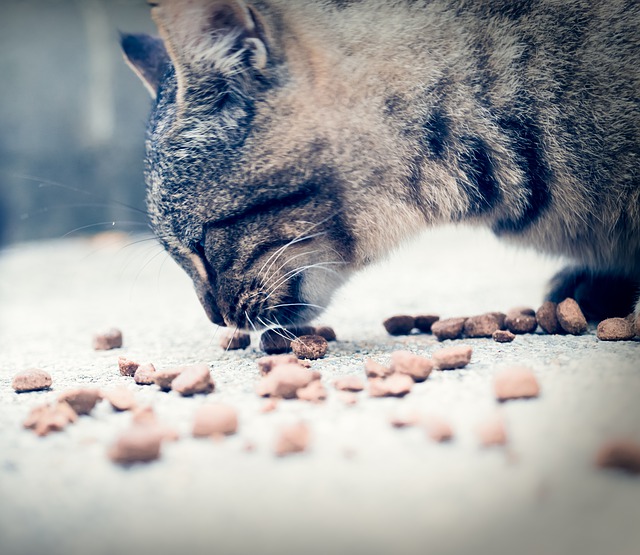
Taurine
Plenty of dog owners became familiar with the amino acid taurine when the grain-free diet craze struck. Taurine’s an amino acid that helps maintain normal heart function. But it also pitches in with vision, digestion, and the immune system (and reproduction). Dogs can manufacture some taurine on their own. But cats? They can’t make ANY. All of their taurine comes from their diet. It’s why ALL cat foods MUST contain taurine to get an Association of American Feed Control Official (AAFCO) seal of approval.
If cats eat dog food, they won’t receive taurine. (There’s no requirement for the amino acid in canine diets) And without taurine, they’ll develop dilated cardiomyopathy (DCM). This is a dangerous heart condition that you can prevent by feeding your cat the proper feline diet.
Arachidonic Acid
When you look at cat food labels, you’ll see an important ingredient: arachidonic acid. This fatty acid is an essential nutrient because cats can’t manufacture it themselves. They need to ingest it. Dogs, on the other hand, have no problem making the fatty acid. So you won’t find arachidonic acid in their foods.
Cats that eat dog food can start to show problems from the lack. You may see skin issues, or it can get as bad as issues with the liver and kidneys!
Vitamin A
Plenty of vitamins appear on food labels. And understanding what they do and where they come from is often difficult. Some vitamins are water-soluble (lurking in the gravies of canned foods), but others are fat-soluble and hitchhike on healthy animal fats. You WILL see vitamin A in both feline and canine foods, but the amounts differ. And, unfortunately, there isn’t a requirement to list that percentage on a pet food label. And it’s the amount that’s critical when cats eat dog food.
Cats need more vitamin A than dogs. Without it, you see plenty of problems:
- Thinning, dull hair coats
- Muscle weakness and even breakdown of their muscles
- Night blindness
Preventing Cats From Eating Dog Food
In general, most cats don’t like eating dog food. It doesn’t taste great to them. And it makes them feel crummy the more they eat. But, sometimes, you’ll find a feline that decides what the other pet has MUST be better than the food they’re getting. And if you have multiple cats, getting away from a group setting may end up more comfortable. Cats AREN’T social eaters (for the most part). And clumping together at mealtimes can drive them to seek that lone dog bowl.
You don’t want to encourage long-term eating of dog food. Your cat will end up extremely ill. Your best bet is to keep the bowls as far apart as possible. And that goes for your felines, too. Separate each of the cat food bowls to allow all of your cats room to enjoy their food in peace. If you find yourself with one “bully” in the group, consider looking into an automatic feeder with microchip technology. Then everyone will have a chance to eat without interference.
Dogs Eating Cat Food
Of course, the flip side of the coin is equally problematic. Sometimes canines get a taste for cat food. This makes sense: cat food is high in protein and fat (not to mention calories). It tastes AMAZING to dogs. However, all of that extra fat and protein isn’t good for your dog’s digestion. They’ll put on extra pounds if you’re lucky. If you’re NOT, you could end up with a case of pancreatitis.
While cat food DOES contain all of the essential nutrients a dog needs to survive, they’re not in the proper balance. This is why pet food companies work so hard to design foods for dogs AND cats. They want to make sure pets receive the vitamins and minerals they need to stay healthy and safe.
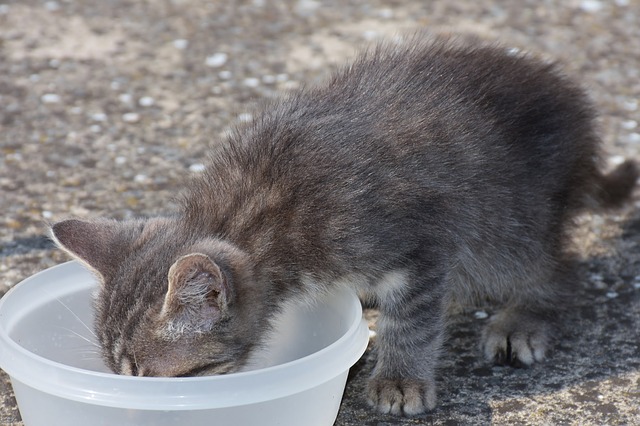
Kibble’s Crunchier on the Other Side of the Bowl
Overall, when cats eat dog food, it’s okay – as long as it’s only the occasional bite. But if you see this happening regularly, it’s time to get concerned. Dog food lacks important nutrients – such as taurine and arachidonic acid – that cats need to remain healthy. And the balance of protein, fat, and calories? They don’t match what a feline needs for proper muscle tone and conditioning. (Not to mention a lack of taste for those kitty taste buds!)
Keeping everyone’s bowl separate to keep mealtimes comfortable should help. Especially if your pup turns around and decides to dive into that high-fat cat food!

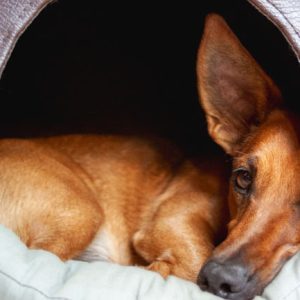
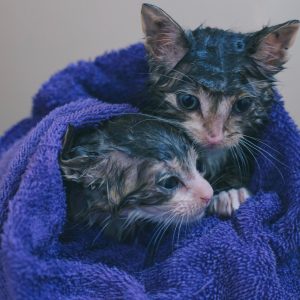
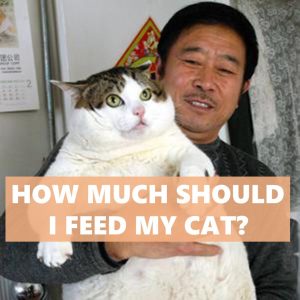
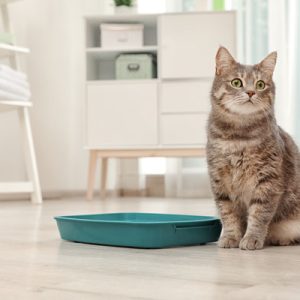
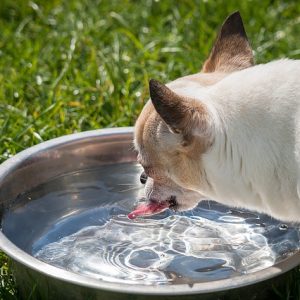
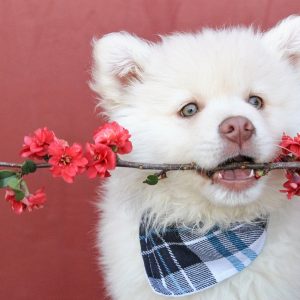
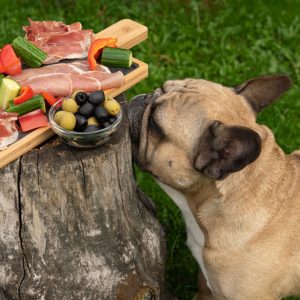
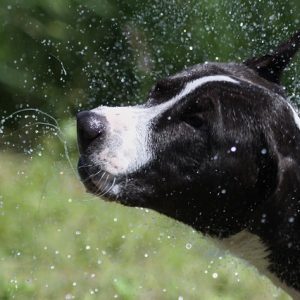
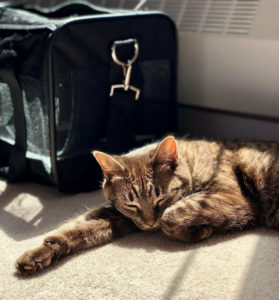
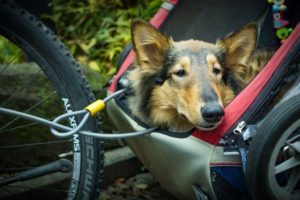

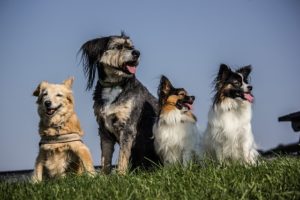
No comment yet, add your voice below!